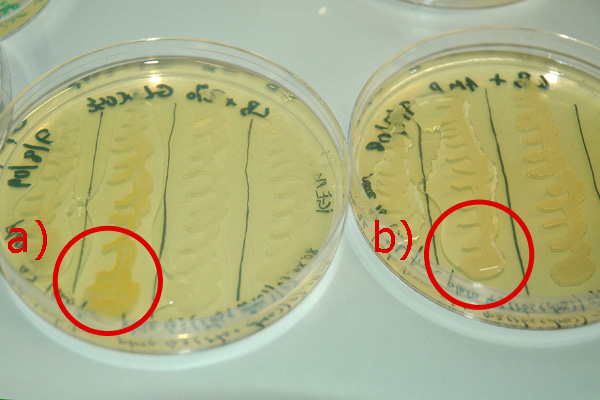Team:Edinburgh/Results
From 2008.igem.org
Glycogen Assay
In order to determine whether our mutation (G336E) has increased the yield of glycogen in the cells we had to come up with a method of assaying glycogen production. The one we designed simply involves adding Gram's iodine solution dropwise on to colonies grown on nutrient agar. The test works by the iodine solution staining the glycogen resulting in a brown colour: a cell containing more glycogen will stain darker brown than a cell containing less glycogen.
In order to test this assay we grew E. coli on two different media, one which would encourage glycogen production and a second that would not. It has been documented that glycogen production is increased in E. coli cells by growth in a medium rich in a carbon source, so we made up the following plates:
- Nutrient agar
- Nutrient agar + 2% glucose
Results of the staining of colonies on these two plates are as follows:
This shows that the stain colony on the (+)glucose plate (a) is darker than the stained colony on the (-)glucose plate (b), indicating that the colony on the (+)glucose plate contains more glycogen than that on the (-)glucose plate. (These results were apparent after ~5 mins of staining. After ~30 mins of staining the colour began to diminish until no apparent difference could be seen between the two colonies, as can also be seen by the colony to the left of the circled colony on each plate in the figure)
 "
"

